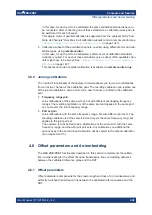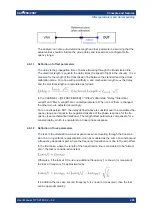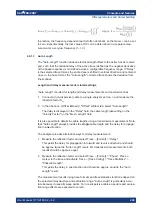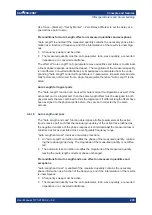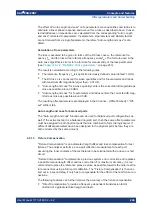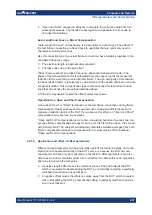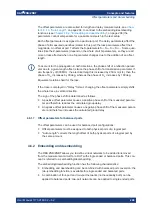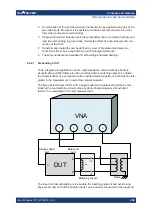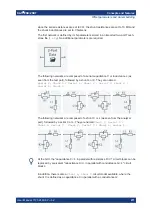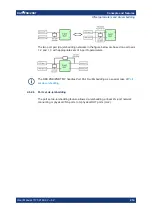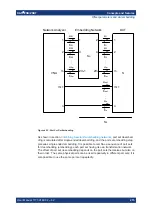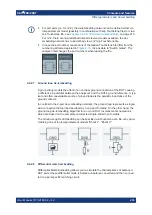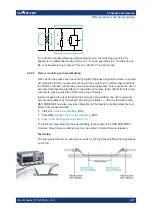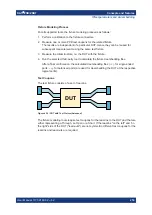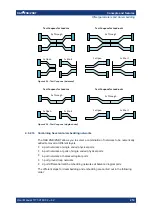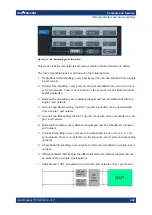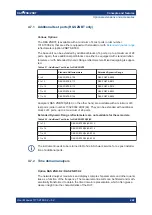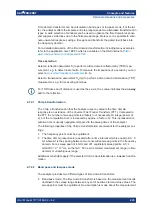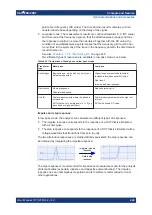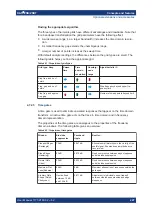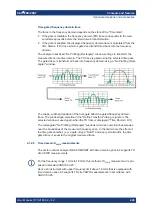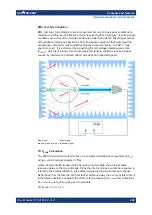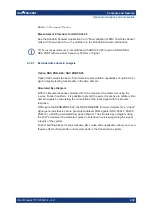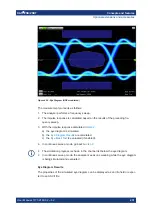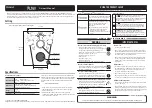
Concepts and features
R&S
®
ZNB/ZNBT
216
User Manual 1173.9163.02 ─ 62
●
For port pairs (i.e. for m=2), the de-/embedding network can be defined either via
lumped element model (possibly in combination with s2p Touchstone files) or via a
s4p Touchstone file, see
Chapter 4.6.2.5, "Port pair de-/embedding"
For m>2, there are no predefined lumped element models available; the de-/
embedding network has to be defined via a s<2m>p Touchstone file.
●
In case the port number conventions of the loaded Touchstone file differ from the
numbering scheme depicted in
, it is possible to "Switch Gates". The
analyzer interchanges the port numbers when loading the file.
4.6.2.7
Ground loop de-/embedding
A ground loop models the effect of a non-ideal ground connection of the DUT causing
a difference in potential between the analyzer's and the DUT's ground reference. A typ-
ical and often unavoidable source of ground loops is the parasitic inductance of the
ground contacts.
In contrast to the 2-port de-/embedding networks, the ground loop represents a single-
wire connection that can be described by a one-port S-matrix. On the other hand, the
ground loop de-/embedding algorithm for an n-port DUT involves matrix operations
which are based on the complete uncorrected single-ended nxn S-matrix.
The Ground Loop De-/Embedding can be specified via Touchstone s1p file or by para-
metrizing one of the lumped element models "Shunt L", "Shunt C".
4.6.2.8
Differential match embedding
Differential Match Embedding allows you to simulate the characteristics of balanced
DUT ports whose differential mode is balance-unbalance converted and then connec-
ted to a port-specific matching circuit.
Offset parameters and de-/embedding

